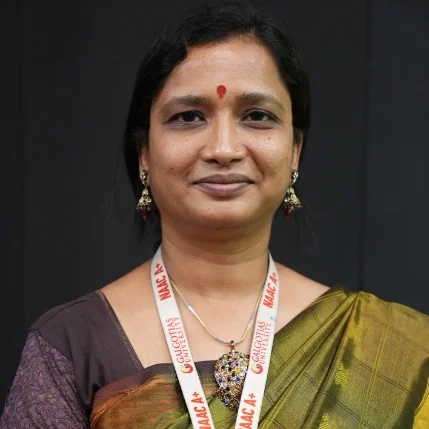
Posted on : May 13, 2025 | By : Eduparc.in

Source: Article submitted by Prof. (Dr.) Anuradha Parasar
Prof (Dr) Anuradha Parasar
Dean
School of Liberal Education
School of Languages
Centre of Excellence in Peace Education & Research
Galgotias University, Greater Noida
Date of Submission: 13 May 2025
Shaping Viksit Bharat through Today’s youth towards Developed India
The nation's journey towards a Viksit Bharat (Developed India) extends as far as India's most prized possession youth. Amongst the citizens (United Nations Population Fund, 2023) of which 65% are below 35 years, the nation has never been blessed with a greater demographic dividend. However, to live up to its potential, education must re-invent itself to mold innovation, diversity, and agility—that is, impart values that will render one better positioned to survive a changing world economy.
Transforming Education for an Engaged Future
National Education Policy (NEP) 2020 (Ministry of Education, Govt. of India) is a paradigm that integrates traditional rote-based systems with integrated skill-based systems. By integrating arts, vocational skill, and critical thinking with STEM education, schools and universities are churning out problem-solving students who can address global challenges such as climate change and AI ethics. Digital literacy classes and platforms such as SWAYAM and DIKSHA (National Digital Education Architecture, 2021) are making quality education accessible, bridging urban-rural gaps. But the Annual Status of Education Report (ASER) 2022 indicates that there are challenges such as unequal access to the internet (only 34% of rural households covered) and tensions in mental health that require drastic reforms so that no student falls behind.
Youth Entrepreneurship and Innovation
Young Indians in the present are not mere receivers of knowledge but active agents of change. For example, firms such as ZunRoof (renewable energy) and CropIn (AI agriculture), certified under the Startup India Initiative (DPIIT, 2023), are the best examples of young Indians' collective efforts towards national objectives such as sustainability and Atmanirbhar Bharat. Institutions, according to the All India Survey on Higher Education (AISHE) 2022 definition, are now incubators of ideas—such as IIT Madras's AI healthcare solutions or TERI's affordable water purification system—where global technology is merged with local relevance. Besides entrepreneurship, youth-movements such as "Fridays for Future India" and "She The People" mark an era dedicated to weather movement and gender equality.
Inclusion: The Heart of Development
Equity is an important a factor of true development. Initiatives like Beti Bachao Beti Padhao (Ministry of Women and Child Development, 2023) and girls' science, technology, engineering, and mathematics (STEM) camps (AICTE, 2023) are reducing structural barriers, and admission of women in higher education is at 49% (AISHE, 2022). Likewise, vocational training of tribal communities under Skill India Mission (NSDC, 2023) is providing industry-ready graduates, bridging education to industry requirements. Green energy and health skill orientation of India has the potential to contribute an additional $1.5 trillion to GDP by 2030, states the World Economic Forum (2023).
Working Together Towards a Common Purpose
Viksit Bharat requires action in partnership. NITI Aayog's New India @75 Strategy (2023) rests on investment in digital infrastructure and capacity building for teachers, and Infosys and Tata, for example, collaborate with academia through the National Institutional Ranking Framework (NIRF) to design future-proof curriculums. Teachers, to reiterate the National Curriculum Framework (NCERT, 2023), need to prioritize mentorship and resilience above all. Youth, however, are charged with civic responsibility and lifelong learning, as 3.8 million student volunteers of the National Service Scheme (NSS) demonstrate through influence in society.
Conclusion:
A Nation in Their Hands India's young people aren't tomorrow's leaders—they may be modern builders. By instructing them to construct innovation, empathy, and resilience, we lay the muse for a advanced India wherein improvement is inclusive. As Prime Minister Narendra Modi introduced on the National Education Summit 2023, "Empowering young people is the cornerstone of Viksit Bharat." With 2030—the UN Sustainable Development Goals deadline—simply across the corner, India's young people are poised to show imaginative and prescient into reality. Now is the time to make investments withinside the young people generation. For of their improvement is the improvement of a nation.
References:
* United Nations Population Fund (2023)
* Ministry of Education, NEP 2020
* ASER 2022 (Pratham Foundation)
* Startup India (DPIIT, 2023)
* AISHE 2022 (Govt. of India)
* NITI Aayog's New India @75 Strategy • World Economic Forum (2023)
About Author: Prof (Dr) Anuradha Parasar, Dean
School of Liberal Education
School of Languages
Centre of Excellence in Peace Education & Research
at Galgotias University, Greater Noida
Prof (Dr) Anuradha Parasar is Commonwealth Academic Fellow. She is CMI Level V Management & Leadership Trainer (United Kingdom), Ph.D., NET, MBA (Distinction), M.Sc. Anthropology (Gold Medal), MA Sociology (VIII Rank), LL B, B Sc. Prof (Dr) Anuradha Parasar work experience spans over more than 28 years as an academician and as an academic administrator. Read more about her Profile and Achievements.
Disclaimer: The above release comes to us directly by the author. We do not take editorial responsibility for the same.
No comment yet for this post...
Copyright - All Rights reserved @ Eduparc.in
LEAVE A COMMENT/QUESTION
Please login to post a comment...